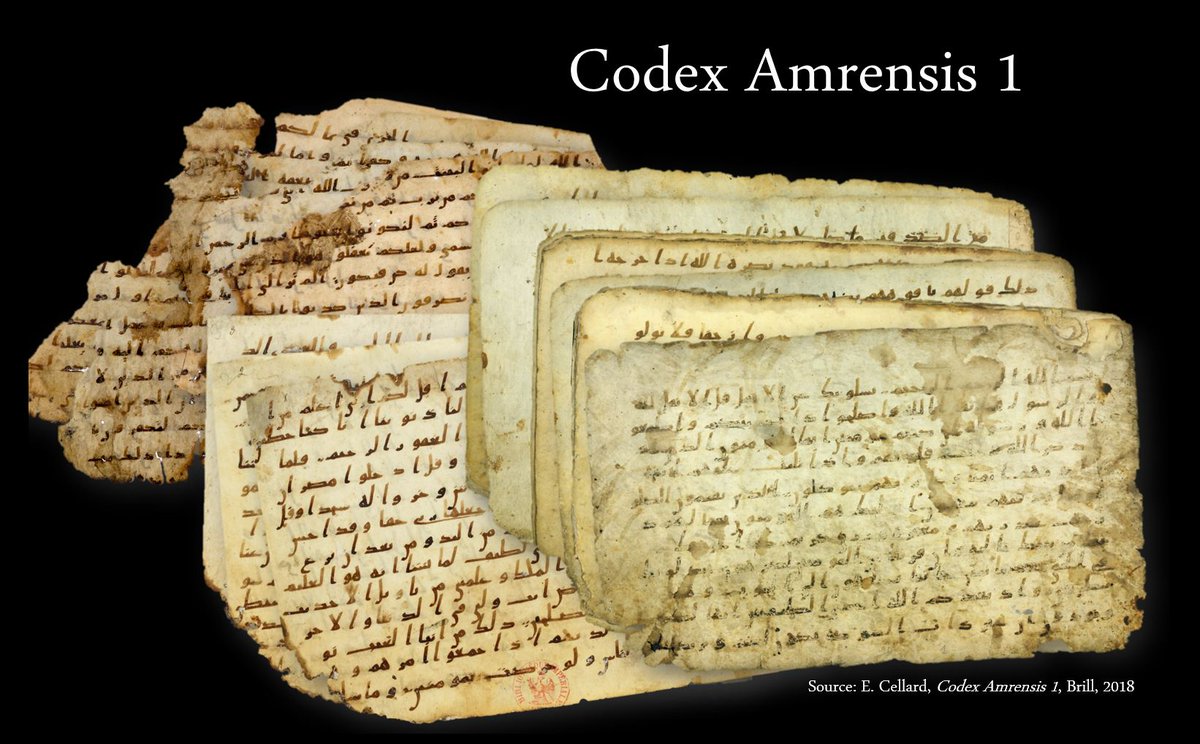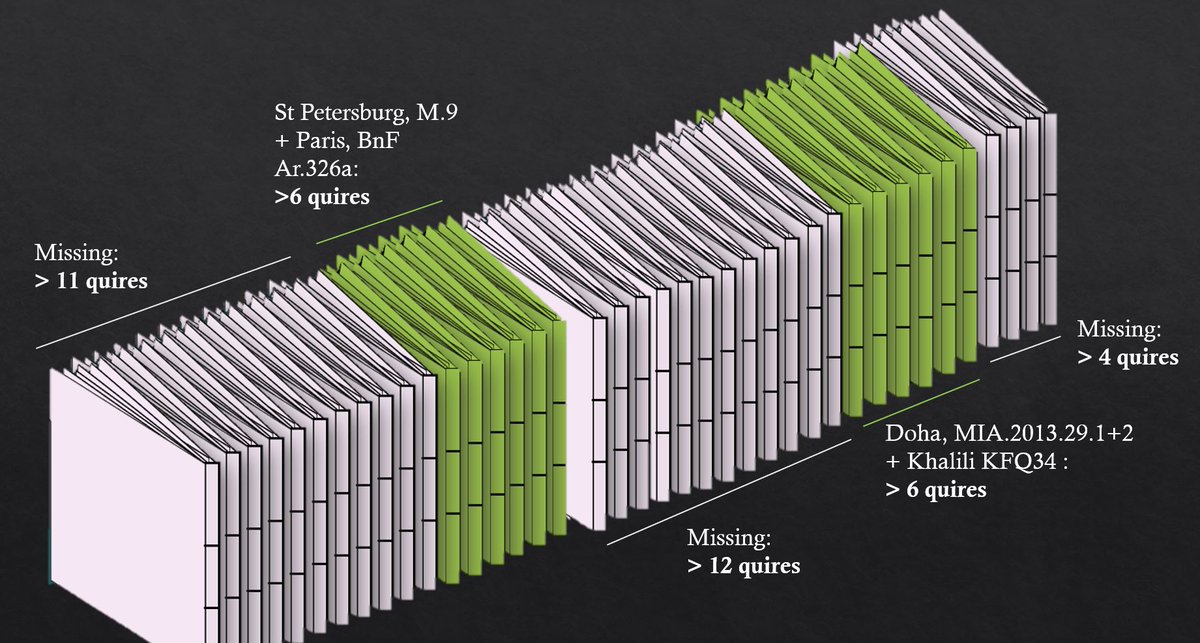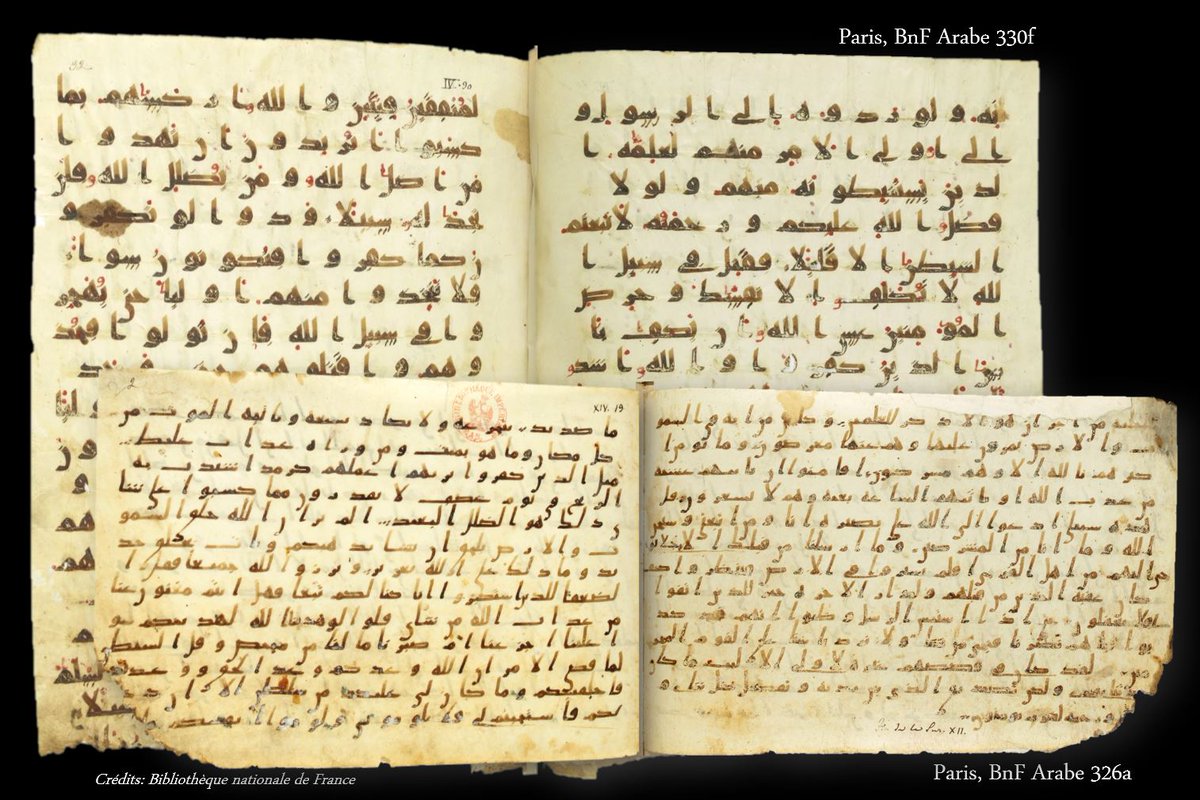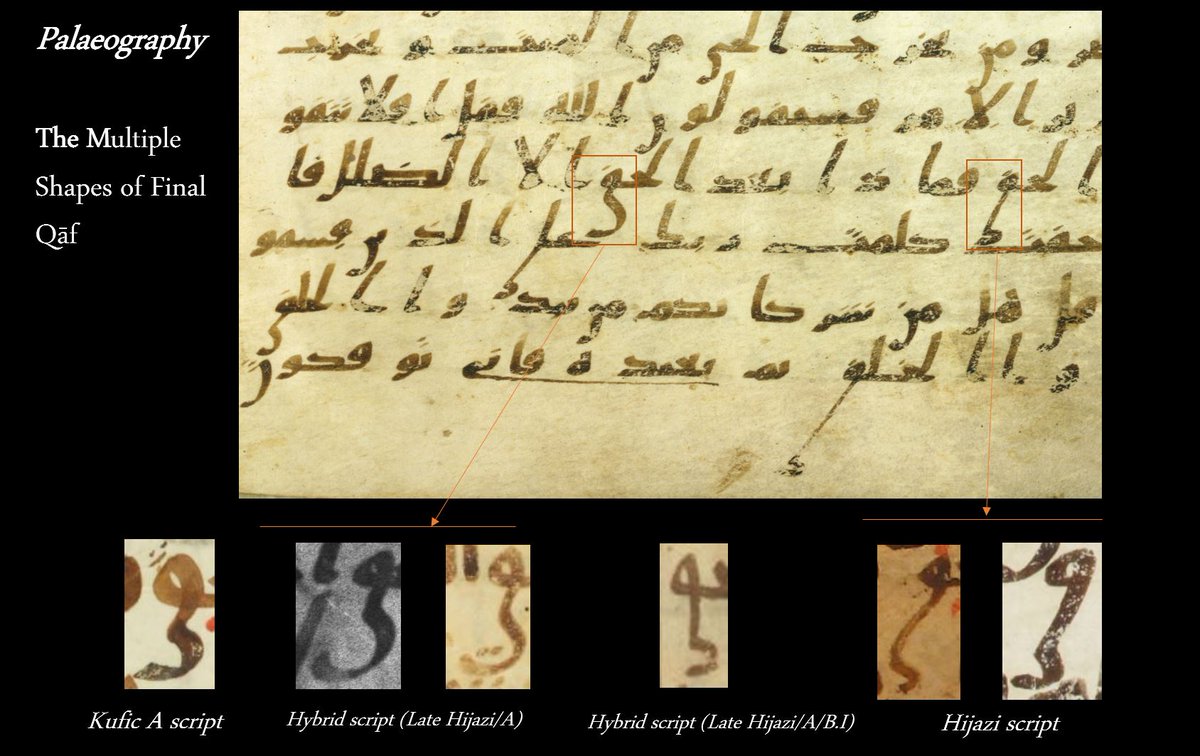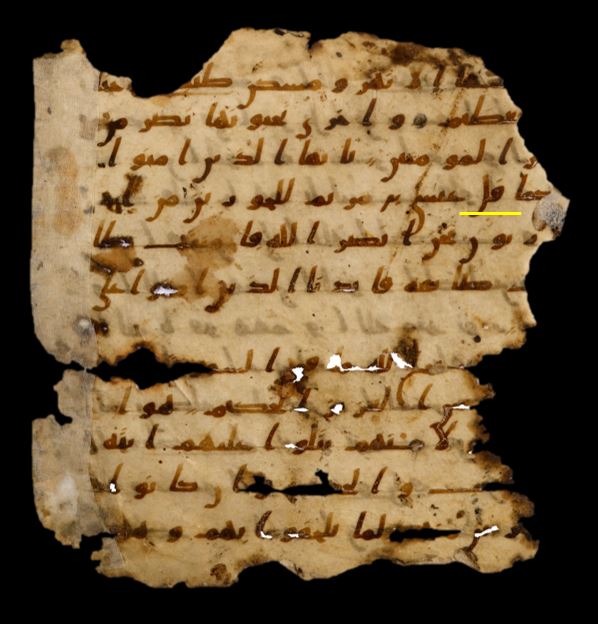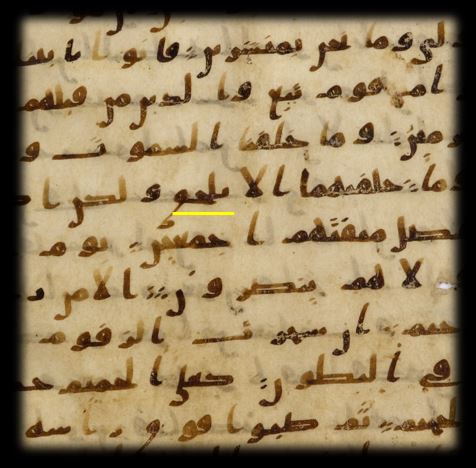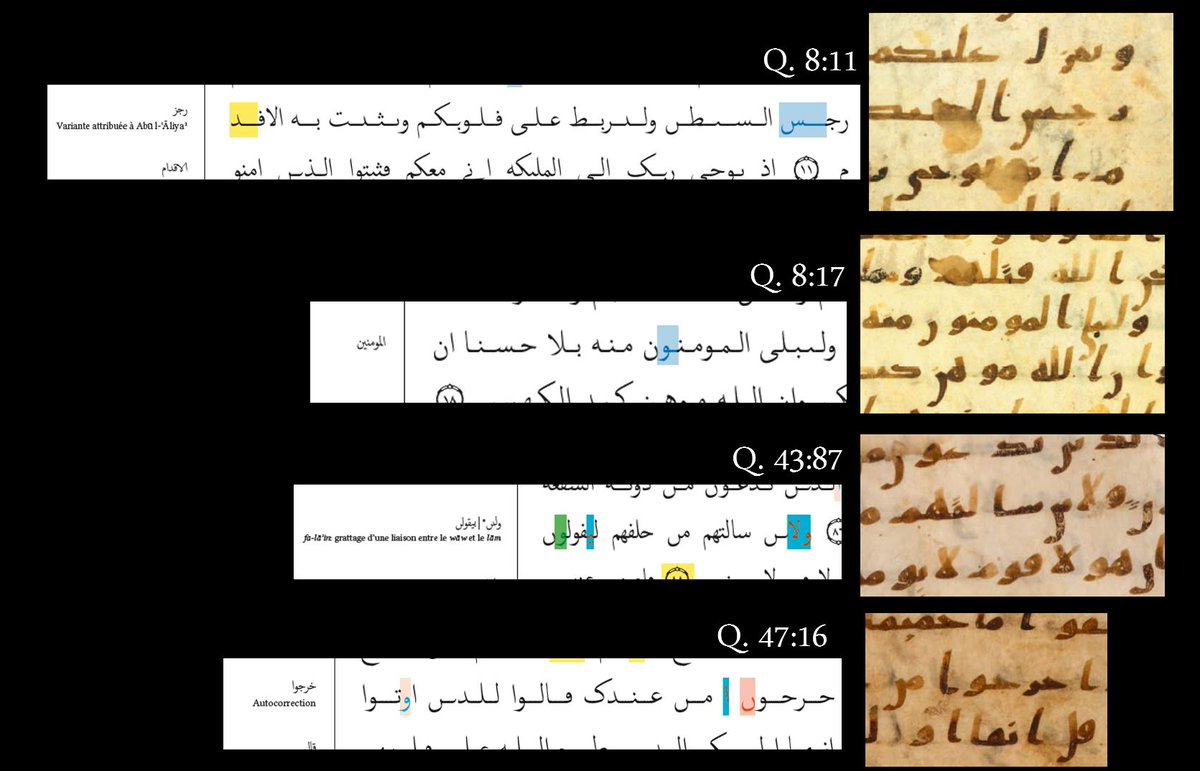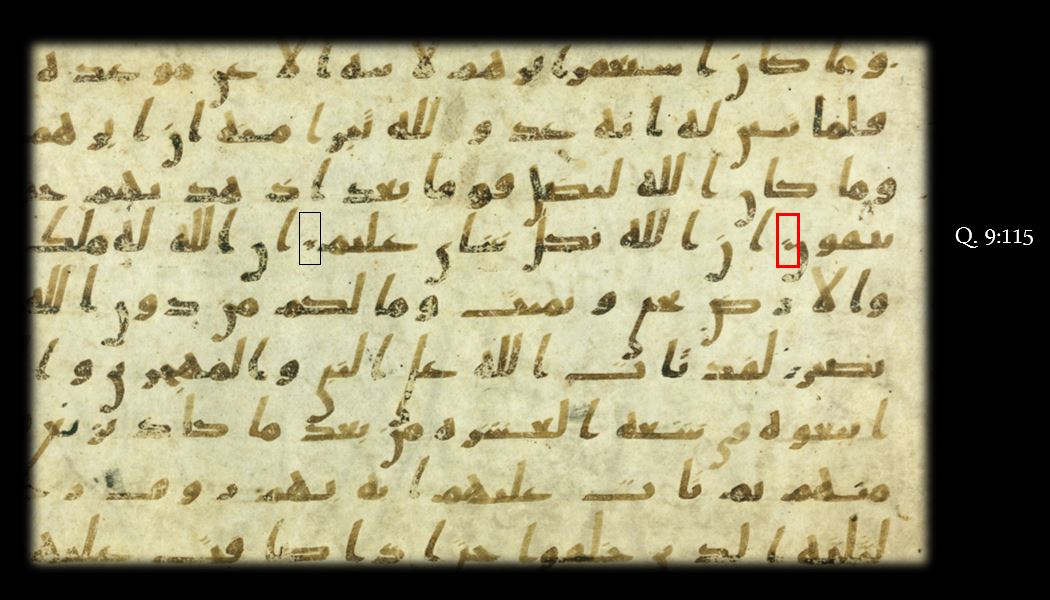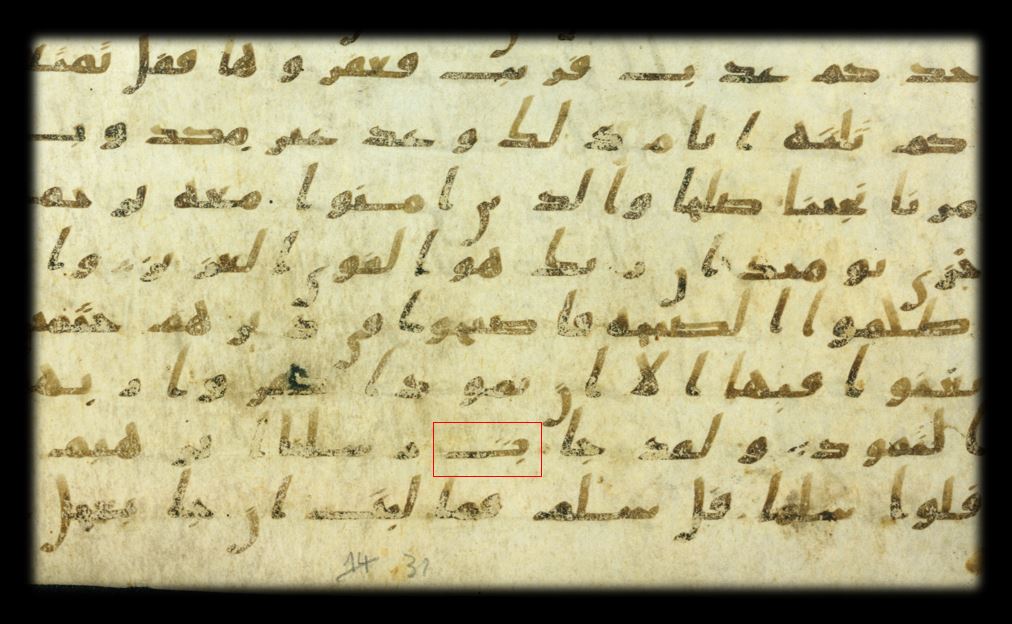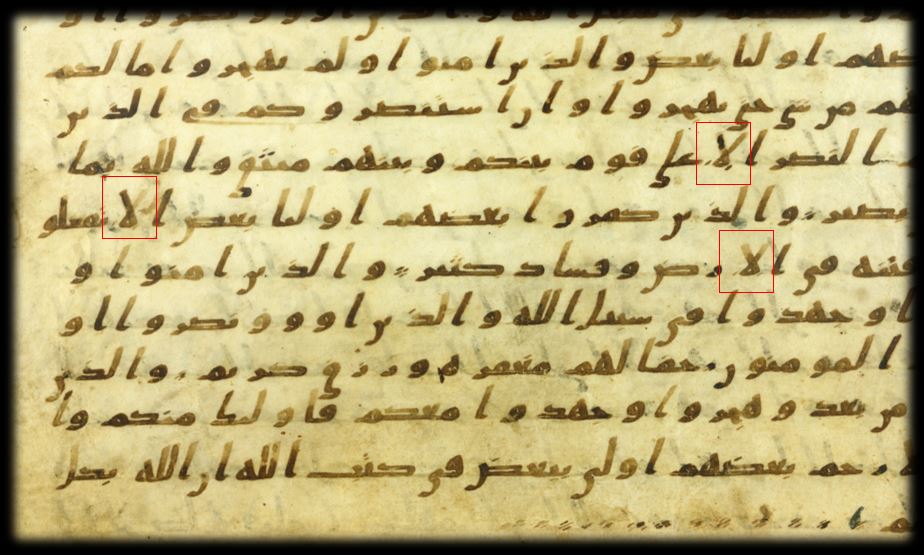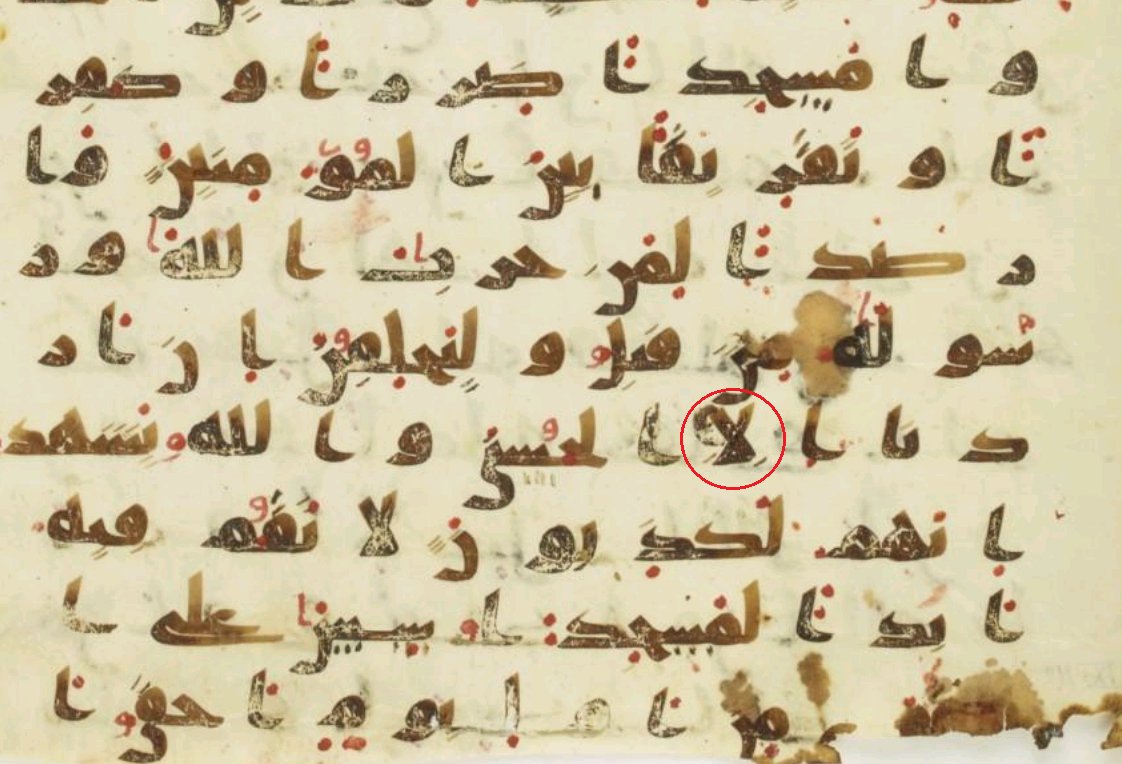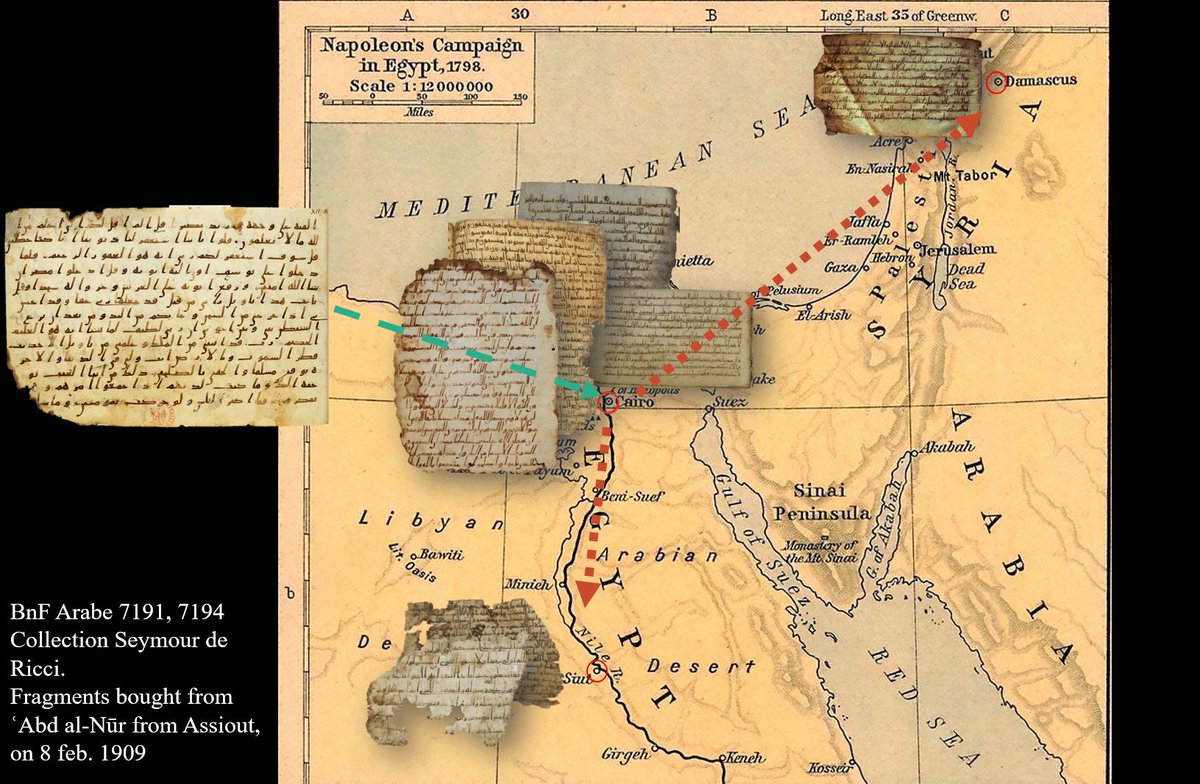Thread. Codex Amrensis 1
1/10. This Qur’ān is the 1st edited volume of the Serie Documenta Coranica. In the early 19th, groups of leaves, kept in the & #39;Amr mosque in Fustat, were collected by French scholars and antiquities dealers. The ms is now scattered in several collections.
1/10. This Qur’ān is the 1st edited volume of the Serie Documenta Coranica. In the early 19th, groups of leaves, kept in the & #39;Amr mosque in Fustat, were collected by French scholars and antiquities dealers. The ms is now scattered in several collections.
2/10. In total, there are 75 leaves (about 20% of the Qur’ān). Their preservation actually could be partly explained with codicology. On 2 occasions, groups of 4 quires (each with 8 leaves) were collected together. Probably because these were still stitched together.
3/10. CA1 is a medium-size volume, different from the early Qur’āns as the Birmingham one. Actually, CA1 is exactly half (in height) of a standard Professional Hijazi or early Kufi volume. As I see it, that could explain its horizontal orientation:
https://twitter.com/CellardEleonore/status/1222486754361532416?s=20">https://twitter.com/CellardEl...
https://twitter.com/CellardEleonore/status/1222486754361532416?s=20">https://twitter.com/CellardEl...
4/10. In terms of materials, there is an economic gain. But the ms is still written by one professional scribe (at least in the extent folios). Its script style is hybrid, mixing a Hijazi feature – leaning of the vertical strokes – with letters’ shapes close to A style.
5/10. The scribe follows the orthographic principles of the old hijazi tradition writing qāla without alif, šay mostly with alif. He often omits alif of the definite article when it’s after the particle bi-. This feature is well-known in mss in A script.
6/10. Beside the orthographic variants, there are a few consonantal variants, such as ‘rijza’ written ‘rijsa’ with sin instead of zay. Other categories of variants – case ending, preposition or conjugation – are quite systematic in the early writing tradition of the Qur’ān.
7/10. The scribe uses to separate the verses, more carefully in the 1st group of leaves (Russia/Paris) than in the 2nd. His system is mostly agree with the traditional Medinan school, but he also adds unrecorded divisions, many correspond to the exact location of a pause (waqf).
8/10. No doubt that the scribe’s originality lies in his manner to put diacritics. They are many, but often strangely placed, like letter tā’ sometimes with two dots above and one below. I think today that this reveals the scribe’s hesitations copying from a model with rare dots.
9/10. There is still something unintelligible : the dotting of lam-alif, which appears on 20% of the occurrences, like negative lā, ’illā, rasūlan, etc…). Is it related to the value of alif ? In any event, such a habit is definitely not isolated, as it appears in other mss.
10/10. Where and when this volume was produced ? Based on my observations, I suppose that it belongs to the same tradition as that of several other mss, majoritary found in Egypt. And time : perhaps end of the 7th- beginning 8th CE??
The complete fac-simile of this manuscript is available in my book: Codex Amrensis 1, Brill, 2018
https://www.amazon.com/Amrensis-Documenta-Coranica-French-Arabic/dp/9004358471">https://www.amazon.com/Amrensis-...
https://www.amazon.com/Amrensis-Documenta-Coranica-French-Arabic/dp/9004358471">https://www.amazon.com/Amrensis-...

 Read on Twitter
Read on Twitter